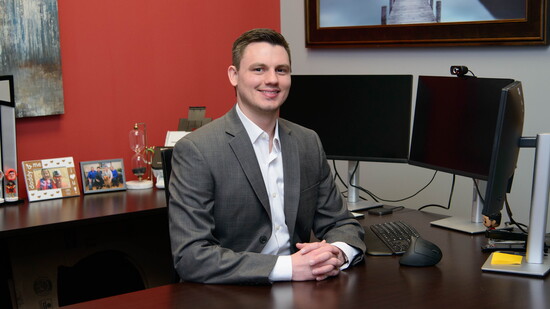Financial readiness often starts with stocks, bonds, or real estate, but many people forget that insurance can be part of a balanced plan. Recently, I chatted with Mike Theisen from State Farm, to talk about how different forms of coverage can protect what matters most, all while helping build a stronger financial foundation.
Mike works out of the Woodbury office on Currell Boulevard, but he serves customers all over Minnesota and parts of Wisconsin, too. As we chatted, he shared his experiences, insights, and a bit of his personal story.
Insurance Statistics That Might Surprise You
According to recent data shared by The Zebra, roughly 60% of Americans have some type of life insurance policy. Among that group, 44% view it primarily as income replacement if something unforeseen happens. Another interesting statistic reveals that 83% of Americans say they would purchase life insurance if it were simpler to grasp. Perhaps most interestingly, LIMRA suggests that 78% of people overestimate the true cost of a life insurance policy. And so, although many people recognize the benefits of coverage, some remain unsure about how to get started or how to understand the details.
Life Insurance as an Asset
“Life insurance can be a strong piece of your financial plan,” Mike notes. “Many folks don’t realize that certain policies can lock in premiums and act like an asset down the line.” He points out that while some individuals want the most budget-friendly option, others find it worthwhile to invest a bit more upfront. This move may allow them to save better and plan with added confidence for future needs. By treating life insurance as more than just a safety net, you can potentially build a layer of financial stability for yourself and your loved ones.
Umbrella Policies for Extra Protection
One type of coverage that Mike often recommends is an umbrella policy. “If I meet with ten people,” he says, “we talk about umbrella coverage for all of them. And after discussing it, about six or more decide they want the additional peace of mind.” Umbrella policies can step in if you face a lawsuit—covering pain and suffering, loss of income, and more. In Minnesota, the average death or disability settlement hovers around $700,000, yet umbrella coverage premiums often remain within reach. “We live in a very lawsuit-heavy society,” Mike explains. “It’s better to be prepared than to take a big financial hit later.”
Shifting Trends in Minnesota and Wisconsin
If you’re a homeowner in Minnesota or Wisconsin, you might have noticed some big changes in how insurance companies handle wind and hail claims. Recent storms have pushed certain insurance providers to pull out of the region entirely. Others have significantly raised deductibles or hiked rates to cover mounting losses. One example: the hailstorm on August 11, 2023, which caused an estimated $1.1 billion in damages across the region, according to the National Oceanic and Atmospheric Administration. All of this has led to frustration for homeowners, especially in the face of inflation driving up the cost of claims.
When Life Changes, Insurance Changes Too
Major life events—like getting married, getting divorced, starting a new job, having a child, or sending a teenager out on the road—can influence what coverage best suits you. Mike explains, “If your income goes up, you might want to protect more. If you’ve built up savings or bought a larger home, those are signs that it might be time to adjust your policy.”
Even something as exciting as adding a teenage driver to your family can alter the discounts or coverage you might consider. The most important part, Mike says, is taking the time to review what you have whenever these big life shifts happen. “We don’t want you over- or under-insured. Your situation is unique, and we can help figure out the right fit.”
The Advantage of Working with a Local Agent
These days, it’s easy to click your way through an online insurance quote. But Mike believes there’s something special about dealing with a local professional. “If you get into a car accident or your house has a fire, you’ll want someone who knows you,” he says. “Folks who call those national 1-800 numbers don’t always have the advantage of working with someone who understands state-specific laws. It can lead to confusion and frustration.”
A Passion for Helping Others Understand
Mike has been in the industry since 2015, initially drawn in by a friend who opened her own State Farm office. A single father with a teenage daughter, he was looking for a path that would offer balance and financial opportunity. “I never thought I’d go into insurance and financial services,” he recalls, “but I’ve found that many people feel overwhelmed by it. I love breaking down the information simply so clients feel more comfortable about what they’re getting.”
He sees his role as part advisor, part teacher: “I enjoy talking to people about insurance. It might not be a fun topic, but it is important. We want to help protect you from the unexpected. Our goal is to keep that risk to you as low as possible.” Whether it’s life, auto, home, or any other form of coverage, Mike tries to clarify something that can seem complicated at first glance.
If you’ve been wondering whether your own insurance setup is working for you—or if you’re missing opportunities for stronger financial security—consider connecting with a local agent who takes the time to understand your goals. And if you happen to be in Minnesota or Wisconsin, Mike Theisen at State Farm in Woodbury is just a call or visit away.
Your situation is unique, and we can help figure out the right fit.
